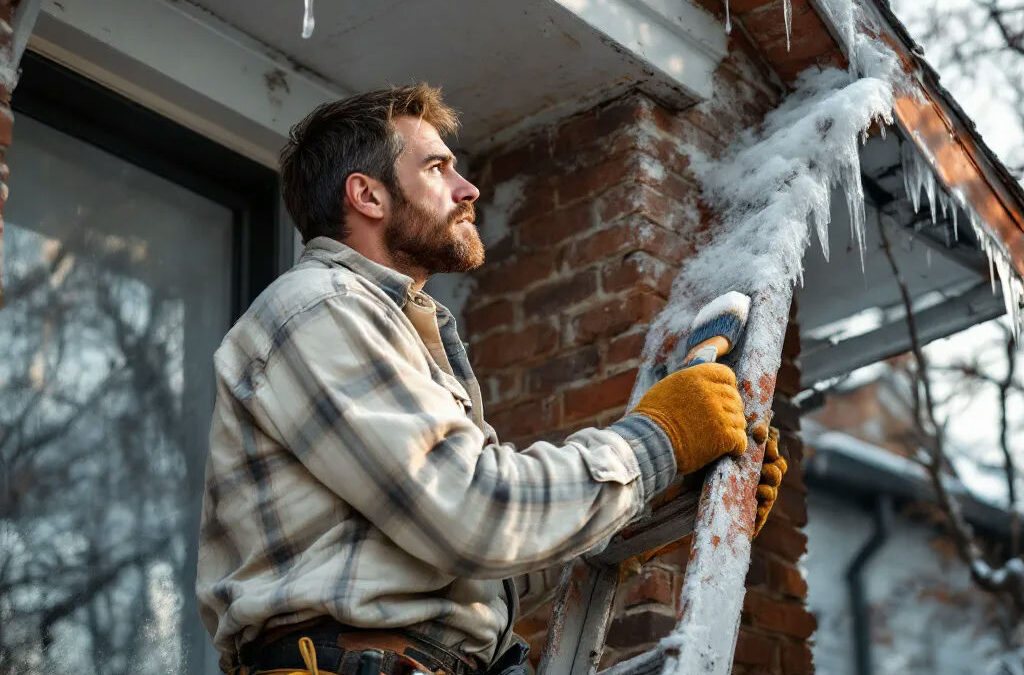I. Introduction
Brick spalling is a common yet serious issue that affects the integrity and aesthetic appeal of masonry structures. Defined as the breaking, flaking, or cracking of bricks due to various environmental factors, spalling can become especially problematic during the winter months. This article will focus on understanding the causes of brick spalling, the importance of winter maintenance, and effective preventative measures.
II. Understanding Brick Spalling
A. Causes of Brick Spalling
Understanding the causes of brick spalling is essential for effective prevention. One of the primary factors is water infiltration, which seeps into the porous surface of bricks and, when frozen, expands, leading to cracks. Additionally, repeated freezing and thawing cycles during winter exacerbate this problem, causing stress on the brick structure. Salt damage, often from de-icing agents, can also contribute significantly to the deterioration process.
For more information on how weather changes affect other structures, visit How Weather Affects Commercial Concrete Pours.
B. Identification of Spalling Signs
Detecting spalling early can minimize damage and repair costs. Common signs include cracked or flaking bricks, which indicate the material is losing its structural integrity. Rust stains appearing on or around bricks often signal underlying reinforcement issues, while any significant structural concerns should prompt immediate inspection and action.
III. Importance of Winter Brick Maintenance
A. Impact of Winter Conditions on Brick Structures
Winter conditions can pose severe risks to brickwork, with moisture from snow and ice leading to increased spalling risk. Cold temperatures and fluctuating weather can accelerate damage, ultimately impacting the longevity of the brick structure. Therefore, proactive maintenance during winter months is crucial to avoid costly repairs in the future.
B. Economic Benefits of Proactive Maintenance
Investing in winter maintenance can save homeowners and building managers money in the long run. By preventing extensive damage through regular upkeep, the costs associated with major repairs or reconstruction can be significantly reduced. Moreover, maintaining the integrity of brick structures ensures they retain their value over time.
Learn more about avoiding costly construction mistakes at Top 7 Mistakes to Avoid in Commercial Concrete Construction.
C. Safety Concerns Related to Spalling
Beyond aesthetics and costs, spalling can pose serious safety risks. Loose bricks may fall, creating hazards for pedestrians and vehicles alike. Thus, addressing spalling quickly is essential not only for property maintenance but also for public safety.
IV. Preventative Measures
A. Proper Sealing Techniques
1. Choosing the Right Sealant
Using the appropriate sealant is vital to protect brick structures from moisture infiltration. Look for breathable sealants specifically designed for masonry to ensure that they allow moisture vapor to escape while preventing water ingress.
Understand curing techniques and their importance in sealing by reading Understanding Curing Times for Commercial Concrete Projects.
2. Application Methods
Proper application is just as important as choosing the right sealant. Ensure that the surface is clean and dry before applying, and follow the manufacturer’s instructions to guarantee maximum effectiveness.
B. Ensuring Proper Drainage
1. Importance of Grade and Slope
Maintaining appropriate grading around a brick structure is essential to directing water away from the foundation. A slope of at least 1 inch per foot is recommended to minimize water accumulation near walls.
2. Installing or Maintaining Gutters and Downspouts
Efficient drainage systems prevent water from pooling against brick surfaces. Regularly inspecting and clearing gutters and downspouts can help manage water flow effectively.
C. Routine Inspections and Assessments
1. Frequency of Inspections
Scheduling routine inspections at least twice a year can help catch early signs of spalling. Additional inspections after significant weather events are also recommended.
For a helpful guide before inspections or work, see our Pre-Pour Checklist for Large Commercial Concrete Jobs.
2. What to Look for During Inspections
During inspections, look for any signs of cracks, flaking, or unusual discoloration. Pay close attention to areas around windows, doors, and joints as these tend to be more susceptible to damage.
D. Repairing Cracks Before Winter
1. Methods for Repairing Cracks
Repairing existing cracks before winter is crucial to prevent further damage. Options include using mortar or a suitable patching compound, and for larger cracks, consulting with a professional may be necessary.
Explore why reinforcement also matters in long-term structural integrity at The Importance of Reinforcement in Commercial Concrete Work.
2. Importance of Timely Repairs
Timely repairs can make a significant difference in the longevity of brick structures. Addressing issues promptly reduces the chances of water infiltration and the associated risks of spalling.
V. Steps to Take Before Winter
A. Conducting a Thorough Inspection
Before winter sets in, conduct a comprehensive inspection of your brickwork. Look for vulnerabilities that could worsen in cold conditions, and ensure that any identified issues are resolved.
B. Cleaning Brick Surfaces
1. Recommended Cleaning Methods
Thoroughly clean brick surfaces using a gentle detergent or a mixture of vinegar and water to remove dirt and debris. Avoid harsh chemicals that can damage the masonry.
2. Importance of Removing Organic Materials
Organic materials like moss or algae can trap moisture and contribute to spalling. Regularly clearing these substances is essential to protecting your brickwork.
C. Applying Protective Coatings
1. Types of Protective Coatings
Consider applying a protective coating specifically designed for masonry. Options include water repellents that prevent moisture penetration while allowing breathability.
2. How to Apply Coatings Effectively
Follow the manufacturer’s guidelines for application to ensure even coverage and optimal performance. Ideally, coatings should be applied on a dry day when temperatures are mild.
VI. Seasonal Tips for Maintaining Brickwork
A. Monitoring Temperatures and Weather Conditions
Keep an eye on local weather forecasts during winter. Being aware of temperature fluctuations will help you prepare and act accordingly to protect your brickwork.
B. Winterizing Exterior Bricks
Consider taking measures such as insulating exposed bricks or using weather-resistant wraps during harsh winter conditions. These precautions can provide an additional layer of protection.
C. Using Snow and Ice Melting Products Safely
When managing snow and ice, avoid using magnesium chloride or rock salt that can be harmful to brick surfaces. Opt for safer alternatives that won’t compromise the integrity of your masonry.
VII. When to Seek Professional Help
A. Signs That Indicate the Need for Professional Repair
If you observe severe cracking, extensive spalling, or crumbling bricks, it’s time to contact a professional. These issues can indicate deeper structural problems requiring specialized attention.
B. Choosing the Right Brick Repair Service
- What to Look for in a Contractor
Select a reputable contractor with experience in brick repair. Look at reviews and ask for references to verify their credentials and past work. Choose contractors who are licensed, insured, and have specific experience with masonry restoration, particularly in winter conditions.
- Questions to Ask Before Hiring
Before committing to a service provider, ask about their assessment process, repair methods, and materials they use. Inquire about warranties on their work and get a detailed timeline and cost estimate. Understanding their approach to winter brick maintenance will help ensure you receive quality service.
VIII. Conclusion
Protecting your brick structures from winter damage requires proactive maintenance and timely intervention. By understanding the causes of spalling, conducting regular inspections, and implementing preventative measures, you can significantly extend the life of your masonry and avoid costly repairs.
Don’t wait until damage becomes severe. Folsom Lawn Service offers comprehensive brick maintenance and repair services to keep your property looking beautiful and structurally sound throughout every season. Our experienced team understands the unique challenges winter poses to masonry structures and provides tailored solutions for your specific needs.
Contact us today for a professional assessment of your brick structures and personalized maintenance recommendations. With proper care, your brick features will maintain their beauty and integrity for generations to come.


